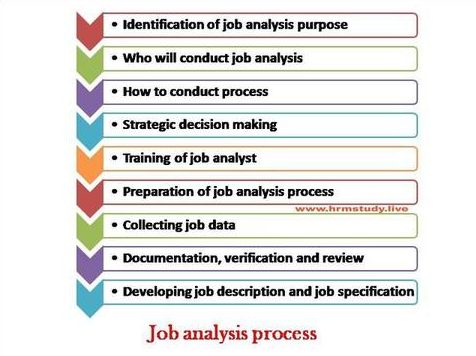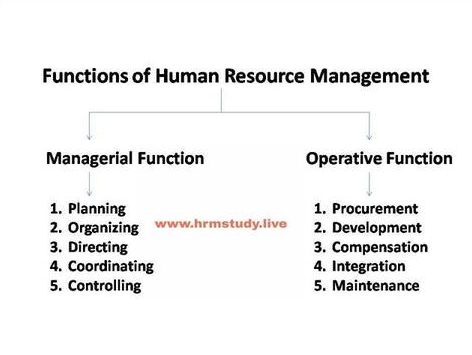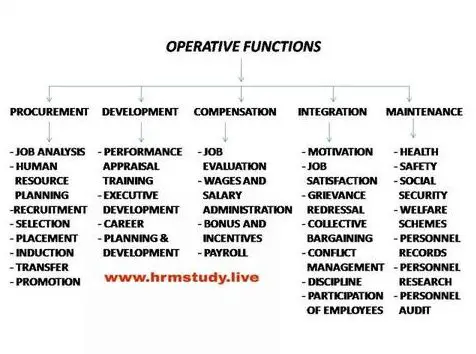What is Job Analysis?
Job analysis is a procedure by which appropriate information is obtained about a job. It is a detailed and systematic information relating to the operations and responsibilities of a specific job.
A Job analysis determines the skills, knowledge, abilities, and responsibilities required for the workers to perform different tasks effectively which is a important part of human resource management.
Information Provided by Job Analysis
Job Identification:
Provide the information about title of the job including its code number.
Valuable characteristics of a job:
Location of the job, physical setting of the job, supervision, union jurisdiction, risks and inconvenience.
Materials and equipment a worker uses:
Metals, plastics, grains, yarns, milling machines, punch presses and micrometer etc.
Procedure to perform a job:
Nature of work like lifting, handling, cleaning, washing, feeding, removing, drilling, driving, setting-up, and many others.
Required personal attributes:
Experience, skills, training, apprenticeship, physical strength, mental capabilities, and social skills.
Job relationship:
Experience required, opportunities for advancement & development, pattern of promotion, essential co-operation, direction, or leadership for a job.
Sources of Information for Job Analysis
Information about a job may be identified through three principal sources.
- From the employees who perform a job.
- From other employees such as supervisors and foremen who observe the workers doing a job and thereby acquire knowledge about it.
- From the outside observers specially appointed to watch and observe employees performing a job. Such outsider observers are called trade job analysts.
Job Analysis Purpose

A comprehensive job analysis program is an essential ingredient of a sound personnel management.
Organization and manpower planning:
It is helpful in organization planning to define labor needs, co-ordinate the activities of the workforce, and divides duties and responsibilities.
Recruitment and selection:
It helps in determining characteristics of person required to perform a particular job. It points out the educational qualifications, level of experience, technical, physical, emotional, and personal skills required to carry out a job in a desired manner. The objective is to fit the right person in the right place.
Wages and salary administration:
By indicating the qualification required for a specific job and the risks and hazards involved in its performance, it helps in salary and wages administration. Job analysis plays a vital role in deciding the pay packages, extra perks, benefits, fixed, and variable incentives of employees.
Employee training and management development:
IT provides the necessary information to the management about the training and development programs. It helps it to determine the training content, subject matter, training tools, and equipment to be used to conduct training and method of training.
Performance Analysis:
It is done to check if the goals and objectives of a particular job are met or not. It helps in deciding the performance standard and evaluation criteria. On this basis, the overall performance of an employee is measured and he or she appraised accordingly.
Job designing and redesigning:
The main purpose of job analysis is to streamline the human effort and to get the best possible output. It helps in designing, redesigning, enriching, evaluating, and also cutting back & adding the extra responsibilities in a particular job. It is performed to increase the employee satisfaction while enhancing the human output.
Health and safety:
It provides an opportunity for identifying hazardous conditions and unhealthy environmental factors, so that corrective measures may be taken to minimize and avoid the possibilities of accidents.
Job Analysis Process
Identification of job analysis purpose:
Every process is futile until its purpose is not identified and defined. Hence, the first step in the process of job analysis is to determine its requirements and desired output.
The Person who will conduct job analysis:
Another most important step involved in this process is to decide about the fellow to conduct it. Some companies prefer getting it done by their HR department while some hire job analysis consultants.
How to conduct process:
The next step in the job this process is to decide how it is to be conducted. A planned approach about how to carry the whole process is required to investigate a specific job.
Strategic decision making:
Further step is to decide the limitation of employee involvement in the process, the scale of details to be collected, sources from where the data is to be collected, method of data collection, processing of information, and segregation of collected data.
Training of job analyst:
Next step in this process is to train the job analyst about conducting the process and use the selected methods for the collection and recording of job data.
Preparation of job analysis process:
Next step of this process is to Communicate it within the organization. Its a duty of HR managers that they should communicate the whole thing effectively so that employees offer their full support to the job analyst. This stage involves the preparation of documents, questionnaires, interviews, and feedback forms.
Collecting job data:
Next step in the process is to collect the data about the job including educational qualifications, skills, abilities of employees required to perform the job, working conditions, job activities, reporting hierarchy, employee behavior, duties, and responsibilities involved.
Documentation, verification, and review:
Proper documentation is done to verify the authenticity of the collected data and then review it. It is the last information that is used to describe a specific job.
Developing job description and job specification:
Now its time to segregate the collected data into useful information. Job description describes the roles, activities, duties, and responsibilities of the job while job specification is the statement of educational qualification, experience, personal traits and skills required to perform the job.
Job Analysis Methods
Observation Method
In this method, a job analyzer analyses an employee and the records of all his performed and unperformed tasks, fulfilled and unfulfilled responsibilities & duties, various methods & skills used by an employee to perform various duties, employee intellectual or emotional ability to overcome the challenges and risks.
However, it seems to be one of the easiest methods to analyze a specific job but the truth is that it is the most difficult one because different people think and interpret the findings in different ways as every person has its way of observing things.
Interview Method
In this method, employees are interviewed to gain the information about their working styles, problems faced by them during job, the use of particular skills and techniques while performing their job, insecurities, and fears about their careers.
This method helps the interviewer to know what exactly an employee thinks about his or her job and responsibilities involved in it.
Questionnaire Method
Another commonly used method is getting the questionnaire filled from employees, their superiors, and managers. However, this method also suffers from personal bias.
Appropriate care should be taken while framing questions for different category of employees. If it is not done effectively, then there will be a full wastage of time, money, and human resources.
Records Methods
The personnel department maintain the records of the facts regarding the job and the jobholders. The analysts collect the information from the records maintained by the personnel department.
The complete information about work and workers cannot be obtained by this technique because certain information such as supervisor-workers relationship, accessories used, and working conditions are not mentioned in that records.
Critical Incident Method
In this method job holders are asked to describe the incidents concerning the job based on past experiences. The incidents so collected are analyzed and classified according to the job areas described.
These are some common methods used in job analysis. However, there are other specialized methods such as task inventory method, job element method, competency profiling method and technical conference method etc.
But while choosing a method, HR managers need to consider time, cost, and human efforts included in conducting the particular method.
Classification of Job Analysis
Job description is a basic job related data that is useful to advertise a specific job and attract a pool of talent.
It contains information about the job title, job location, job summary, nature of the job, objectives of the job, tasks and duties to be performed, working conditions, machines, tools, and equipment used by the prospective workers and hazards involved in it.
Purpose of Job Description
- The main purpose of the job description is to collect job-related data to advertise for a particular job. It provide assistance to attract, target, recruit, and select the right person for the right job.
- It is done to examine the kind of requirement to be delivered in a particular job. It define the duty and responsibilities of the employees if they are selected for that particular job opening.
- It provide recruiting staff a clear idea that what kind of candidate is required by a particular department or division.
- It also explain which person will report to whom.
Job Specification
A job specification may be defined as a inscribed detail about educational qualifications required for a job, level of experience, physical, technical, emotional, communication skills required to perform a job, responsibilities involved in a job, etc.
It also includes general physical health, mental health, intelligence, leadership quality, adaptability, flexibility, values and ethics, etc.
Purpose of Job Specification
- Described based on the job description, job specification helps candidates to analyze whether they are eligible to apply for a particular job vacancy or not.
- It helps the recruiting team to examine that what type and level of qualifications we actually want, qualities, and set of characteristics present in the candidates to make them eligible for the job opening.
- Job specification provide specified information about any job including job responsibilities, required technical and physical skills, conversational ability, etc.
- It also helps in choosing the right candidate for a particular job.
Job Design
What is Job Design?
Job design is may be defined as an attempt to build a match between job requirements and human qualities & skills. Job design is a intentional and systematic approach to structure the technical and social aspects of work to improve technical efficiency and job satisfaction.
The main objective of job design is to connect the requirements of the individual and the requirements of the organization. The needs of employees include job satisfaction in terms of interest, challenges, and achievements.
And organizational requirements and objectives refer to high productivity, technical efficiency, and quality of work. Nowadays educated and creative employees demand well-designed jobs. Therefore, increasing attempts are being made to redesign jobs to improve the quality of working life.
Conclusion
Job analysis and job design are the important parts of human resource management. Through this HR collects the information that which person is suitable for job and what are the requirements to be needed for the job.
Without job analysis human resource management can not come to know that what is the nature of the job and what are the requirements such as knowledge, skills, education, physical ability, mental stability, social background, etc. are needed for the job to achieve the organization objectives.



